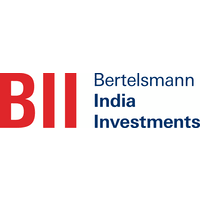
Bertelsmann
View Brand PublisherWhat CEOs need to know before going Public: Sanjeev Bikhchandani on Building It Up with Bertelsmann
Before we answer that, here’s a quick question for you. Which was the first online company to be listed in India? If you didn’t know, it’s Info Edge, an internet classifieds company which got listed in November 2006. And how many internet companies have listed since then? Well, not exactly an impressive number.
While the chatter around IPOs has risen in recent years with private investors looking for exits, not many internet companies, including the unicorns, have met expectations. One might wonder why a unicorn would need to go in for an IPO when it has raised hundreds and millions of dollars in the private markets.

There are multiple reasons. The ability to raise funds, higher visibility, enhancing credibility, increased discipline, and, of course, the thrill of scaling the business on customers’ money. But Indian internet companies already know all this. What they really don’t know is when they should go public and how?
The answer is simple: when your company is ready for it. Hence, what is more important than answering whether to IPO or not-to-IPO, is finding if you are prepared to IPO to be able to service your investors right. And that’s what Sanjeev Bikhchandani, the man behind India’s first dot-com IPO, helps you find out on this episode of Building It Up with Bertelsmann podcast.
From preparing for frameworks that are essential before going IPO to choosing between India or overseas listings, Sanjeev uncovers it all. We are confident that insights on his IPO journey, the roadblocks the company faced and why he believes that NASDAQ is brutal for Indian startups, are going to be of great value if IPO is on your mind.
Click here to hear the podcast.
Building It Up with Bertelsmann is India’s first growth focused podcast. It features honest, candid and to-the-point conversations on entrepreneurship and growth-pangs of start-ups. Listen to leaders of the start-up community share what goes behind taking a company from 10 to 100 and how to solve some of the biggest growth challenges.







